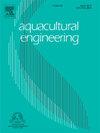Group activity amount estimation for fish using multi-object tracking
IF 4.3
2区 农林科学
Q2 AGRICULTURAL ENGINEERING
引用次数: 0
Abstract
The activity amount of fish can directly indicate its level of health. Quantitative indexes of fish activities provide valuable data for water quality control, disease warning, and fish behavior research, which can enhance factory breeding technology and fish welfare. To address the issue of a lack of indicators for the amount of activity in fish groups and individuals, a group activity amount estimation method based on fish multi-object tracking is proposed in this paper. The FasterNet network is improved by incorporating a branch that learns the features from the previous frame. This method is referred to as Improved FasterNet Fish Tracking (IFFT), and is capable of fast and accurate identification, location, and estimation of the offset of fishes between the two frames in a joint way. Subsequently, a method of activity amount estimation based on grid step is proposed to get the activity index from the trajectories. Moreover, a visualization method is proposed to illustrate the spatial distribution of fish groups. This method utilizes elliptic fitting to calculate the spatial distribution characteristics such as radius, dispersion, cohesion, and polarization. Experiments conducted on the established fish tracking dataset demonstrate that the proposed IFFT achieved a high-order tracking accuracy (HOTA) of 67.54 % and a multi-object tracking accuracy (MOTA) of 92.4 %, surpassing other existing mainstream methods. Furthermore, the average tracking speed reached 20.6 frames per second (FPS). The mean absolute percentage error (MAPE) of the activity amount estimation of fish groups based on the grid step is 0.15 % per frame, indicating a highly accurate estimation of fish activity. The results demonstrate that the proposed activity estimation method of fish groups based on multi-object tracking effectively eliminates the interference caused by water movement. It also achieves a balance between speed and accuracy, enabling real-time quantitative and visual analysis of fish group movement and providing decision support for improving the factory farming process.
基于多目标跟踪的鱼群群体活动量估计
鱼类的活动量可以直接反映其健康水平。鱼类活动的定量指标为水质控制、疾病预警和鱼类行为研究提供了有价值的数据,可以提高工厂化养殖技术和鱼类福利。针对鱼类群体和个体活动量缺乏指标的问题,提出了一种基于鱼类多目标跟踪的群体活动量估计方法。FasterNet网络通过加入一个分支来学习前一个框架的特征而得到改进。这种方法被称为改进的FasterNet Fish Tracking (IFFT),能够以联合的方式快速准确地识别、定位和估计两帧之间的鱼的偏移量。随后,提出了一种基于网格步进的活度估计方法,从轨迹中获取活度指标。此外,还提出了一种可视化方法来说明鱼类种群的空间分布。该方法利用椭圆拟合计算空间分布特征,如半径、色散、内聚、极化等。在已建立的鱼类跟踪数据集上进行的实验表明,IFFT的高阶跟踪精度(HOTA)为67.54 %,多目标跟踪精度(MOTA)为92.4 %,超过了现有的主流方法。此外,平均跟踪速度达到20.6帧每秒(FPS)。基于网格步进的鱼群活动量估计的平均绝对百分比误差(MAPE)为每帧0.15 %,表明对鱼群活动的估计精度很高。结果表明,基于多目标跟踪的鱼群活动估计方法有效地消除了水体运动对鱼群活动的干扰。它还实现了速度和准确性之间的平衡,实现了鱼群运动的实时定量和可视化分析,并为改进工厂化养殖过程提供决策支持。
本文章由计算机程序翻译,如有差异,请以英文原文为准。
求助全文
约1分钟内获得全文
求助全文
来源期刊

Aquacultural Engineering
农林科学-农业工程
CiteScore
8.60
自引率
10.00%
发文量
63
审稿时长
>24 weeks
期刊介绍:
Aquacultural Engineering is concerned with the design and development of effective aquacultural systems for marine and freshwater facilities. The journal aims to apply the knowledge gained from basic research which potentially can be translated into commercial operations.
Problems of scale-up and application of research data involve many parameters, both physical and biological, making it difficult to anticipate the interaction between the unit processes and the cultured animals. Aquacultural Engineering aims to develop this bioengineering interface for aquaculture and welcomes contributions in the following areas:
– Engineering and design of aquaculture facilities
– Engineering-based research studies
– Construction experience and techniques
– In-service experience, commissioning, operation
– Materials selection and their uses
– Quantification of biological data and constraints
 求助内容:
求助内容: 应助结果提醒方式:
应助结果提醒方式:


